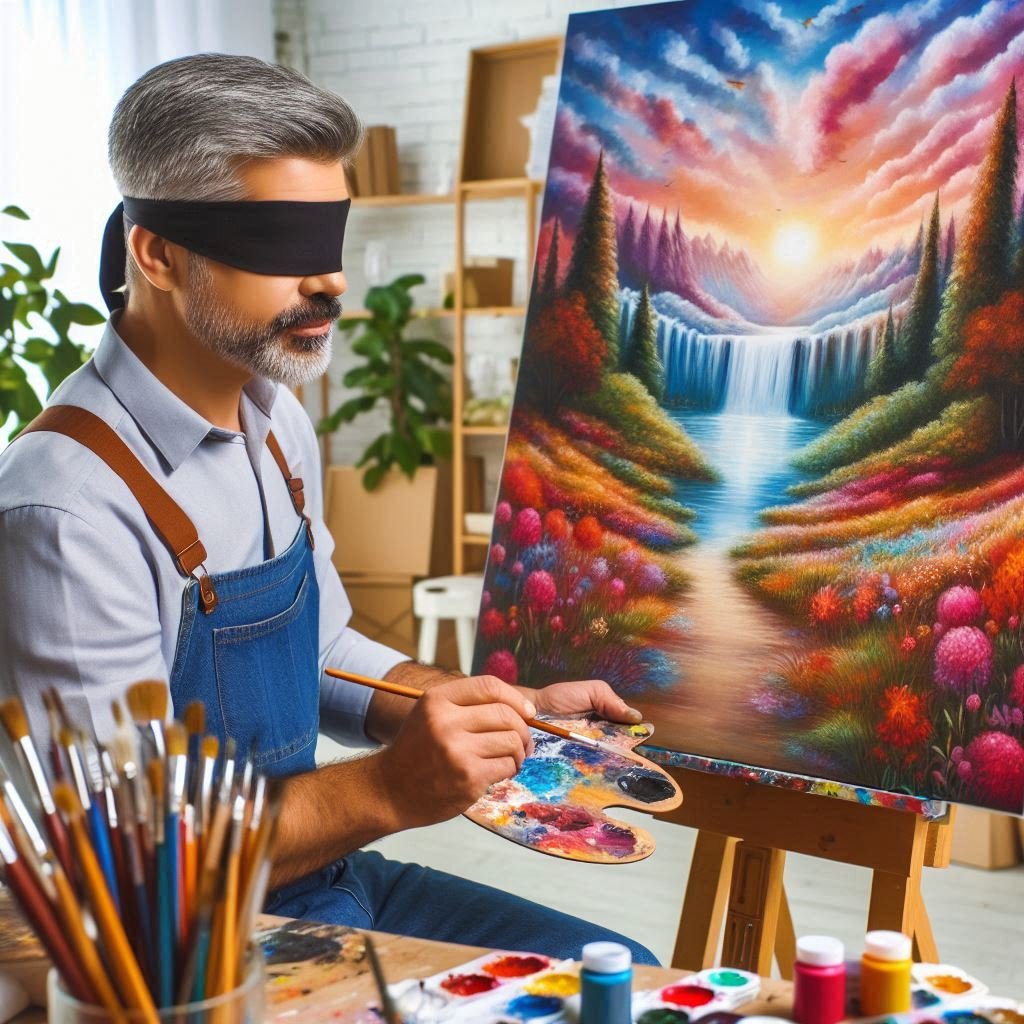
In a quiet town by the sea, there lived a man named Elias. From birth, he had never seen the colors of the world. He had never looked at a sunset, never admired the blues of the ocean or the greens of the trees. Elias was born blind.
But despite his darkness, he dreamed of painting.
People found his dream ridiculous.
“How can a blind man paint?” they mocked.
“You don’t even know what colors look like!”
“You should focus on things blind people can actually do.”
Elias didn’t argue with them. He simply listened, smiled, and carried on with his dream.
Ever since he was a child, he had always been fascinated by the way things felt. He couldn’t see light, but he could feel warmth on his skin. He couldn’t see rain, but he could feel its cool touch on his hands. He couldn’t see colors, but he wondered—could he experience them another way?
His journey began with curiosity.
One day, he dipped his fingers into a pot of paint and felt its texture. Thick, smooth, cold. He dipped another finger into a different color—this one felt thinner, almost silky.
And that’s when he realized: each color felt different.
Elias began experimenting. He asked sighted people what colors reminded them of certain feelings.
- Red, they said, was hot like fire.
- Blue was cool like the ocean.
- Yellow was warm like the sun.
He started associating colors with temperature. He placed the paint bottles under different lights—some warmed up, some stayed cool. Slowly, he learned which ones were which.
But he wanted more.
So he went to a local art store and asked, “Do you have textured paints?”
The shopkeeper was puzzled. “Why would you need that?”
“Because I paint by touch,” Elias answered.
He started mixing different materials into his paints. Sand for roughness, oil for smoothness, thick clay for depth. When he painted, he didn’t see the strokes—he felt them.
He spent hours, days, years, refining his craft. The first paintings were simple—just swirls, lines, and shapes. But as time passed, he began creating art that told stories, that expressed emotions.
One day, his friend—who had always believed in him—took one of Elias’s paintings to an art gallery.
At first, the curator laughed. “A painting by a blind man? This must be a joke.”
But then he looked at it.
The texture, the emotion, the depth—there was something special. Something different. The painting wasn’t just art—it was an experience.
And so, Elias’s work was displayed. People came, curious about the artist who couldn’t see. And when they touched his paintings, they felt something they had never felt before. His art spoke to them, not just through sight but through touch.
Soon, his paintings were being sold for thousands of dollars. Art collectors from around the world came to see his work.
The blind man who once dreamed of painting had now become a world-famous artist.
When a journalist asked him, “How did you do it, despite being blind?” Elias smiled and said:
“I was never blind to possibility. The only limits are the ones we believe in.”
And so, Elias painted—not with his eyes, but with his heart. Because vision isn’t just about what we see. It’s about what we feel.



